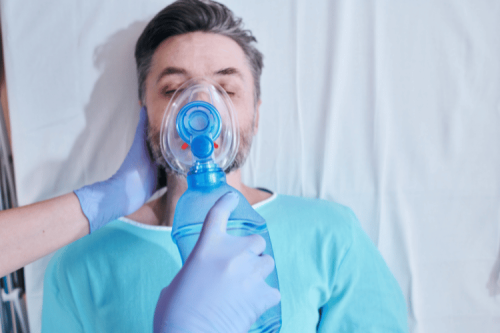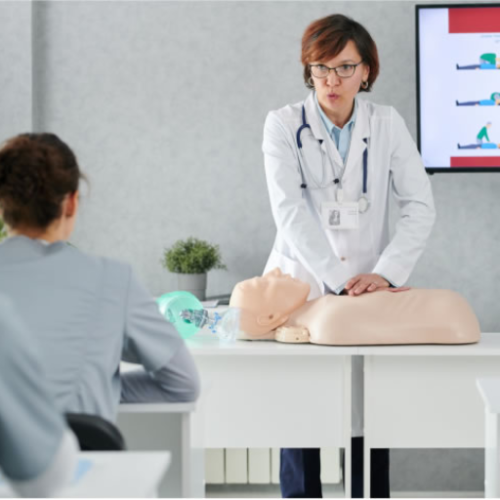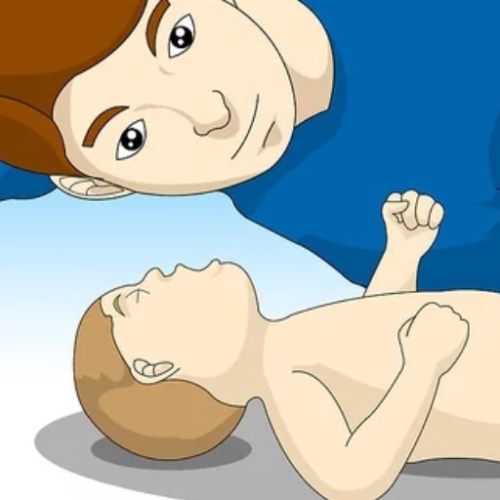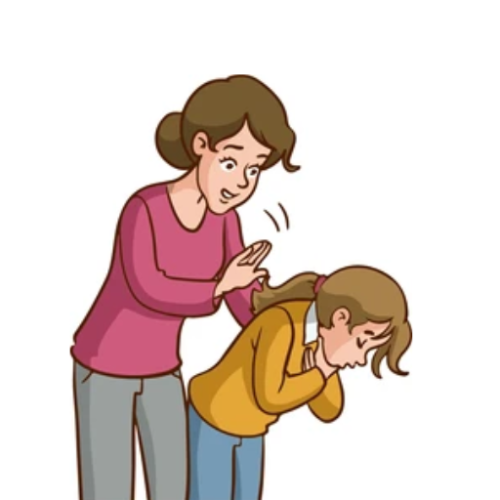
A choking incident is an unmatched emergency but those who are trained in the event of such an emergency find it relatively easy. The goal of this blog is to provide basic information regarding the practice of Basic Life Support with regard to choking incidents in adult and child populations. The post will explain the procedure by clearly defining the steps that can be taken during the situation so that the reader can make quick decisions even in stressful times which can help in saving people. This article is important for healthcare providers and other interested parties because it prepares one to remain composed and reassuring in times of a crisis.





What is the Best Way to Choke Relief for Adults and Children?

Adult Choking and Remedies
Choking in adults is most often an obstruction in the airway with an object or food material which leads to a blockage in breathing. The best approach that can be used against choking is the Heimlich maneuver. First step in this step includes, standing behind the person and placing both arms firmly on their waist. Use one of your hands to make a fist and place it at a point just above the person’s navel. With your other hand, grip that fist and put pressure that comes in a thrust that is first inward and upward in a shape of the letter J. This process should be repeated until the obstruction is fetched out or until the individual is able to breath or cough out effectively. Much worse turn out for the person, if and when they seem to lapse into unconsciousness, begin the CPR process and summon emergency medical team at the same time.How to address a choking situation with an infant
When an infant is choking, it is essential to carry out actions that are fast but soft at the same time. The first step towards relieving an infant's choking is to keep the infant down on your forearm while the head is lower than the rest of the body. The head and neck should be supported with the hand of the rescuer. Using the heel of one hand, administer as many as five back blows between the shoulder blades of the infant. If the object does not come free, turn the infant face up and use two fingers to make thrusts in the center of the chest five times, each just below the nipple line. Continue cycles of firm back slaps and chest thrusts until the airway clears or help arrives. If the infant is unable to respond, commence CPR without delay and call for emergency medical services.Differences Between Adults and Children
The main distinction in the way choking relief is performed in children, as opposed to adults, revolves around the approach that is employed to deliver the relief. Choking techniques such as Heimlich maneuvers are more appropriate for adults or older children. Infants would require back blows and chest thrusts but only in more gentle ways so they are not injured. Due to the smaller size of children’s airways that are prone to occlusion, time is of the essence in these cases. It is, however, equally important to appreciate the correct age considerations that pertain to choking in order to effectively treat patients who have held their breath for too long.How to Perform Abdominal Thrusts and Back Blows Effectively?

The Heimlich Maneuver
This article informs readers how to practice the Heimlich maneuver. The reader is required to stand behind the person who attempts the Heimlich maneuver with their arms leveraged around the waist of that person. With one hand, form a fist and position it slightly above the person’s belly button. Although other hand is supporting the first fist, complete few thrusts that are quick, inward and upward in direction. Continue the operation until an object blocking the airway is removed. This procedure must be practiced by adults and children older than one year. For infants back blows and chest thrusts should be used as described earlier but their head and neck need to be supported at all times during the actions. It is important to note that it is possible to use this technique before medical assistance is available and without any complications in terms of suffocation.When to use back blows and chest thrusts
Use of back blows and chest thrusts apply when it comes to an infant under the age of one year that is choking thanks to an object. The first step in the procedure is first five strong back blows to the area between the shoulder blades of the infant with the heel of the restraining hand. If the foreign object is still obstructing it, administer five thrusts by commanding the expectorant muscles to focus the exertion below the breastfeeding region and push the fingers down quickly. Either repeating some of these steps or changing to different ones is the only way of resolving this problem so if not the goal is to clear the airway then most certainly the goal is to wait for paradoxical assistance.When the Person Is Unconscious
In the instance where the person becomes unresponsive or unconscious, lower them gently to the floor or ground and call for help. Commence with Rescue Breaths followed by chest compressions, but make sure that you try to clear the patient’s mouth after every few compressions. Do not cease CPR until emergency services have arrived or the individual is able to breathe again.What are the BLS Protocols for Choking?

Significance of Having an Open Airway
Having an open airway is very important in any choking case because it allows for oxygen rich air to continue flowing towards the lungs and important organs. Without prompt response, a blocked airway can result to oxygen deprivation and eventually cause brain injury or death. Thus, there should be no delay of the efforts to dislodge the obstruction and return the person to normal breathing with back blows, chest thrusts or CPR if required.How to Determine Whether there is an Obstructed Airway
To diagnose an obstructed airway, one must look for the signs such as forceful coughing, gag reflex and inability to sound out words or to breathe. In extreme situations, the person may make a high-pitched sound while breathing or grip their throat which is a well-known choking sign. Should a person become bluish in color because he or she has been deprived of oxygen, it entails that there is a very high level of obstruction and immediate steps must be taken.When to Start CPR and Chest Compressions
Commence CPR and chest compressions if the individual is in a state of unconsciousness or the airway is obstructed making ventilation ineffective. First of all ensure the safety of the surrounding. Then, verify the level of consciousness and request emergency services support. Proceed with chest compressions, first placing your hands on the person’s sternum and performing quick and firm compression with little breaks until help arrives or the patient becomes alert and breathes normally.How to Administer First Aid for a Choking Adult or Child?

Identifying an individual choking victim
In order to identify the choking patient, the individual who is unable to speak, breathes with great difficulty, wheezes or turns purple, and has their hands over their throat can all be considered as presenting symptoms of choking. If they are above the age of 5 years, are aware of their surroundings and can cough powerfully, it is good practice to tell them to cough. If the individual cannot talk or cough, the status of their airway is life threatening.How Choking Procedure is Performed
In case an otherwise normal adult or child seems unable to cough, talk or breathe and is choking, the Heimlich manoeuvre should be performed. Approach the person who is choking from behind and embrace their stomachs. One hand should be closed as a fist and the thumb should be facing towards no more than an inch above the navel. Your other hand should cover the fist on the stomach and then pull it rapidly in the upward direction. This should be repeated till the obstruction is dislodged from the throat or the individual loses consciousness. If at any point the individual does collapse, lower them on the floor and commence CPR immediately.Emergency Response Steps for Child Choking
The question of answering emergency response steps on how to react or perform when a child is choking can be answered as follows: If the child is aware but cannot cough, speak and breathe, the Heimlich maneuver must be applied. If necessary, kneel behind the child and encircle waist’s arms. With one hand, make a fist above the navel and with force, thrust the fist toward the ceiling through vigorous, repeated motions. To remove the obstruction or the child loses consciousness, keep going on. If unconsciousness occurs, perform CPR, and seek emergency aid at once without any delay.Why Might a Choking Victim's Condition Worsen?

Factors Leading to Cardiac Arrest
The lack of blood supply to the brain and other vital organs, causing irreversible damage is one explanation that the average time of the brain being deprived of blood in a choking victim leading to cardiac arrest can also be too excessive. The absence in clearance of the obstruction has very severe consequences, namely the body's oxygen levels deplete during prolonged asphyxia under normal conditions. It’s also possible for the heart to cease pumping owing to severe hypoxia deficits caused by prolonged suffocation. Moreover, subpar or delayed attempts to alleviate the wounds around the trachea or the choking object itself can increase the risk of a respiratory emergency.When Choking Person Goes Unconscious After Choking
The fast-paced and short attention with the information when an unconscious person who has been choked comes forward due to time pressure is understandable. Commence by contacting the emergency response center as the first step. Then start by doing two thrusts to the chest with the palm at the mid sternum and placing the other palm on top of the first to perform rapid compressions which should be done 100 times to 120 times with a focus interval of 30 to avoid rapid exhaustion. Assisted tones should be performed for a specified breath if one has had proper training and also waits for the airways to clear to avoid choking the individual again. All of these activities should be sustained until paramedics get on the situation or the patient for whom the entire activity was performed and goes back to normal breathing.Significance of Prompt First Aid Response
It is of great importance to perform first aid measures as soon as possible, as this can help improve the likelihood of survival and recovery when dealing with a person who is choking. Hypoxia may be avoided by intervention, as well as the chances for the heart to stop pumping blood. Performing effective and timely action enables the rescuer to reestablish oxygen flow which is essential for all major organs and can SAVE the life of the person and improve the outcomes as well.Reference sources
Frequently Asked Questions (FAQs)
Q: In the event when the victim of choking is unable to cough or speak, what should you do?
A: Lock the person’s hands around their navel, and then apply outwards and upwards pressure somewhere around the person's ribs. If these techniques fail, provide the beast thrusts from behind the victim.Q: For a small child, how can choking be relieved?
A: For young kids, initiation of the motion to the victim’s abdomen above the navel should be performed using a knife-edge which will exert pressure on children’s abdomens. You will often need to bend in order to grasp the entire child’s body.Q: What is the recommended procedure to assist a child who is choking?
A: A infant that is choking should be positioned down on the caregiver’s forearm with the head and neck supported. Thereafter, the child’s five back pushes forcefully over between the parents head using a hand reaches out.Q: What is the appropriate way to give back blows on a choking infant?
A: Use one arm to support the infant and support the infant’s head with that arm. While the infant is lying on your forearm, tuck your thumb between the rest of your fingers, supporting the infant’s head and standing it up more than the rest of the body.Q: What are some signs that a victim is choking?
A: They may be able to barely speak, unable to cough or breathe, and they may also put their hand in their throat while their neck seems to be in distress or skin color may appear to be cyanosis.Q: Do you conduct the Heimlich maneuver differently on pregnant women or obese people?
A: An overweight woman or a pregnant woman should use chest thrusts rather than abdominal thrusts when there is a need to do so. During the push, your hands need to be pressed on section low enough on the sternum and pectorals needs to be thrust in upward and inward positions.Q: What if a person who is choking on a foreign object has already been subjected to five back blows and five abdominal thrusts, but the object is still stuck?
A: The individual performing the thrusts should continue alternating five back blows and five abdominal thrusts until either the object is expelled or the person is not alert anymore.Q: What actually happens to the infant during the choking relief that necessitates holding the neck and head?
A: Securing in place an infant's movement of the neck and head is important in such circumstances so as to avoid any further obstruction of the infant's airway during the process.1621








 Login with Google
Login with Google Login with Facebook
Login with Facebook